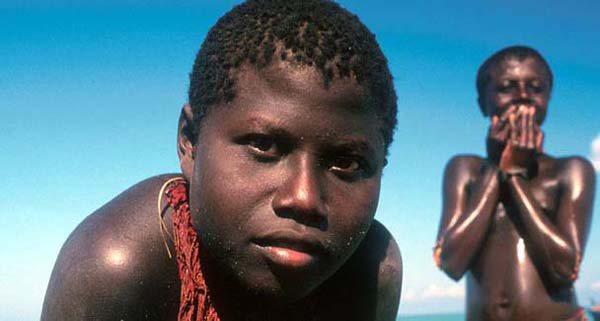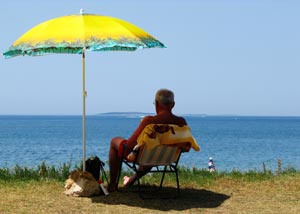1. Select only ONE of the following
environmental stresses:
(a) heat,
(b) high levels of solar radiation, (c) cold, or (d) high altitude.
Discuss specifically
how this environmental stress negatively impacts the survival of humans by
disturbing homeostasis.(5 pts)
Out
of the four options of environmental stresses to choose from, I chose high
levels of solar radiation. High levels of solar radiation negatively impacts
the survival of humans by disturbing homeostasis because they affect the Melanin which is located in
the epidermis.
2. Identify
4 ways in which humans have adapted to this stress, choosing one specific adaptation
from each of the different types of adaptations listed above (short term,
facultative, developmental and cultural). Include images of the adaptations.(5
pts each/ 20 pts total)
I don’t
believe humans have no short term adaptions from high levels of radiation. The only
thing I can think of is when a human stays out of the sun to avoid the sun which produces the radiation.

A
facultative adaption would be the tanning of skin. In the summer people tend to
be darker, and in the winter they tend to lose this “color”. This is because of
environmental stress. In the summer time humans expose themselves to more
radiation than they do in the winter, due to the fact that individuals are
exposing themselves more in the summer their bodies produce a natural sunscreen
which protects us until the environmental stressor goes away. This explains why
we tend to be darker in the summer and lighter in the winter.
Developments
adaptions would be found in darker populations. Individuals who live where they
are exposed to higher rays, need the dark skin. The individuals with darker
skin can tolerate higher levels of radiation better.

Cultural
adaptions would be the clothing we wear, the sunscreen we put on, and the items
we made to protect ourselves from the radiation. We have developed clothing
which can block the rays from reaching our skin. We have developed sunscreen to
be able to go into the sun with protection. Last but not least we have
developed items to block the radiation such as umbrellas.



3. What
are the benefits of studying human variation from this perspective across
environmental clines? Can information from explorations like this be useful to
help us in any way? Offer one example of how this information can be used in a
productive way. (5 pts)
Some
benefits would be that we can learn where we have come from and how much we
have adapted. Humans live all over the world and we can see why individuals who
live by the beach are darker than the people who live in Alaska, and what the
actual purpose of being “tan” is. Yes this information can be helpful to us,
one example would be vitamin D and skin cancer. This information is good to
know because we can determine how much radiation is good because humans need
vitamin D, however too much can be cancerous and can lead to death.

4. How
would you use race to understand the variation of the adaptations you listed in
#2? Explain why the study of environmental influences on adaptations is a
better way to understand human variation than by the use of race.
(10pts)
Race
could be used to understand the variation of adaptions listed in #2 because of
the skin color. Skin color is a form of adaption, individuals with darker skin
can withstand more radiation therefore we can determine they live or lived
somewhere with high levels of radiation. The study of environmental influences
on adaptions is a better way to understand human variation because the color of
our skin is adaption to an environmental stressor rather than a form of inferiority.
Each human is different and just as pbs.org stated, “not one characteristic,
trait or gene distinguishes all members of one so called from all members of
another so called race.”
